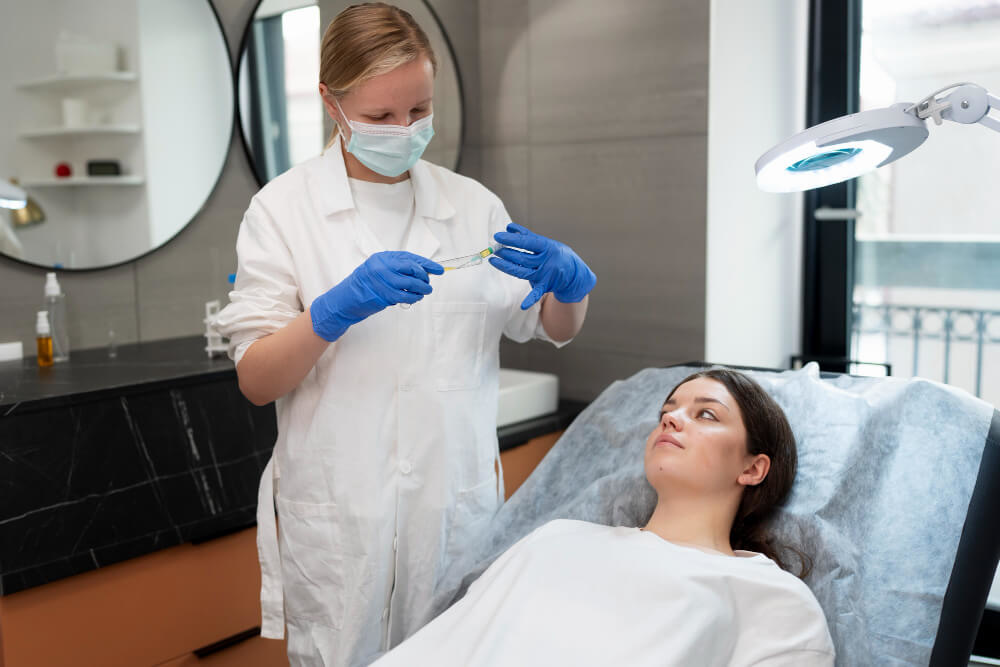Longevity Training: How to Exercise for a Longer, Healthier Life
What if your workouts could do more than just build muscle or help you shed a few pounds? Imagine if every squat, every walk, and every stretch was a direct investment in adding vibrant, healthy years to your life. This is the fundamental promise of longevity training, a revolutionary approach to fitness that is shifting the conversation from simply looking good to feeling good for as long as possible.
This isn’t about extreme, punishing exercise regimens or chasing elite athletic performance. Instead, it’s a strategic and sustainable fitness philosophy designed to extend your healthspan, which is the period of your life spent in good health, free from chronic disease and disability. The goal is to be strong, stable, and capable well into your 80s, 90s, and beyond, able to play with your grandkids, travel, and enjoy an independent, high-quality life.
At its core, longevity training is the physical practice of aging gracefully and powerfully. It prioritizes function, injury prevention, and metabolic health over pure aesthetics or raw power. It’s about building a body that is resilient, robust, and ready for the demands of a long and active life.

What Exactly is Longevity Training?
Think of longevity training as playing the ‘long game’ with your body. While traditional fitness might focus on short-term goals like preparing for a marathon or achieving a certain body fat percentage, longevity training looks at the big picture. It asks the question: what kind of physical capacity will I need in 30, 40, or 50 years?
The answer guides a training protocol that is comprehensive and balanced. It’s less about specialization and more about being a well-rounded ‘generalist’ of movement. This means developing a solid foundation in several key areas of physical fitness, ensuring that no single system is neglected. Your body is an interconnected system, and this approach honors that complexity.
This type of training directly targets the physical declines associated with aging. It combats muscle loss, preserves bone density, maintains joint mobility, and enhances cardiovascular and metabolic health. It is a proactive strategy to mitigate risk and build a buffer against age-related frailty, making you harder to ‘break’ as the years go by.

Why is Movement So Crucial for a Long Life?
Our bodies were designed to move. For millennia, human survival depended on physical activity, from hunting and gathering to farming and building. In the modern world, however, we have engineered movement out of our daily lives, replacing it with chairs, cars, and screens. This sedentary shift has had profound consequences for our health and lifespan.
The principle of ‘use it or lose it’ is brutally true when it comes to our physical selves. When we stop using our muscles, they begin to atrophy. When we don’t load our bones with stress from movement, they weaken and become brittle. Our cardiovascular system becomes less efficient, and even our brain function can decline without the stimulus that physical activity provides.
Regular movement is one of the most powerful tools we have to combat chronic inflammation, a key driver of nearly every age-related disease. It improves insulin sensitivity, helping to prevent metabolic disorders like type 2 diabetes. Furthermore, exercise stimulates the release of beneficial hormones and brain-derived neurotrophic factor (BDNF), which supports the growth of new brain cells and protects against cognitive decline.

What are the Core Pillars of Longevity Training?
To build a truly resilient body for the long haul, a well-structured longevity training program focuses on four essential pillars. These pillars work together to create a comprehensive foundation for a long and healthy life. Neglecting any one of them leaves you vulnerable. By addressing all four, you build a body that is balanced, strong, and adaptable.

Why does stability matter as we age?
Stability is perhaps the most overlooked yet critical component of longevity fitness. It is the foundation upon which all other movement is built. Stability refers to your ability to control your body’s position, both when you are still and when you are moving. It involves your core muscles, the small stabilizing muscles around your joints, and your sense of balance or proprioception.
As we age, a decline in stability is a primary contributor to falls, which can be catastrophic for older adults, often leading to a cascade of health problems and a loss of independence. By focusing on stability now, you are essentially buying an insurance policy against future falls and injuries. Good stability also translates to better posture, reduced back pain, and more efficient movement in all your activities.

What exercises build stability?
Building stability doesn’t require heavy weights or intense effort. It’s about precision and control. Practices like yoga and Pilates are excellent for developing core strength and body awareness. Simple exercises can also be incredibly effective. Think of single-leg stands, where you try to balance on one foot for 30-60 seconds.
Other key exercises include bird-dog, dead bug, and various types of planks, all of which challenge your core to keep your spine neutral while your limbs are moving. Incorporating unilateral movements, where you work one side of the body at a time, like single-arm dumbbell rows or Bulgarian split squats, also forces your stabilizing muscles to work harder.

Isn’t strength training just for bodybuilders?
This is one of the most persistent and damaging myths in fitness. Strength training is arguably the most important type of exercise for longevity. Its benefits go far beyond building large muscles. As we age, we naturally lose muscle mass in a process called sarcopenia, which begins as early as our 30s. This loss of muscle leads to weakness, poor metabolic health, and increased frailty.
Strength training is the number one antidote to sarcopenia. It also places mechanical stress on your bones, signaling them to become denser and more resistant to fractures, which is crucial for preventing osteoporosis. Furthermore, muscle is your body’s primary ‘sink’ for glucose. The more muscle mass you have, the better your body is at managing blood sugar, dramatically reducing your risk for metabolic syndrome and type 2 diabetes.

How should I approach strength training for longevity?
The focus should be on functional, compound movements that mimic real-life activities. These are exercises that use multiple muscle groups and joints at once. Think of movements like squats (sitting and standing), deadlifts (picking something heavy up off the floor), overhead presses (placing something on a high shelf), and rows (pulling something toward you).
For longevity, perfect form is more important than the amount of weight lifted. It’s better to lift a lighter weight with impeccable technique than to ego-lift a heavy weight and risk injury. A good starting point is two to three full-body strength sessions per week, allowing for adequate recovery between sessions. As experts in the field demonstrate, a structured approach yields the best results, and a well-designed Peter Attia’s longevity training plan often centers on these foundational principles of strength and stability.

Why is cardio so important for heart health?
While strength and stability build a robust physical frame, aerobic exercise, or cardio, is what keeps your engine running smoothly. Your cardiovascular system, comprised of your heart, lungs, and blood vessels, is responsible for transporting oxygen and nutrients to every cell in your body. The efficiency of this system is a powerful predictor of both healthspan and lifespan.
Regular aerobic exercise strengthens your heart muscle, allowing it to pump more blood with each beat. It improves the elasticity of your blood vessels, helping to maintain healthy blood pressure. It also increases the number and efficiency of your mitochondria, the tiny power plants inside your cells. Better mitochondrial health means more energy and slower cellular aging.
One of the key metrics for cardiovascular fitness is VO2 max, which is the maximum amount of oxygen your body can utilize during intense exercise. A higher VO2 max is consistently linked to a lower risk of all-cause mortality. Longevity training employs a dual strategy to improve both the base and the peak of your aerobic fitness.

What is Zone 2 training and why is it a big deal?
The foundation of cardiovascular training for longevity is building a large aerobic base, and the primary tool for this is Zone 2 training. This refers to low-intensity, steady-state exercise where you can comfortably hold a conversation. It’s a pace that feels easy, almost too easy for those accustomed to high-intensity workouts.
Despite the low intensity, the benefits are immense. Spending significant time in this zone stimulates mitochondrial biogenesis, the creation of new mitochondria. This improves your body’s ability to use fat for fuel, enhances metabolic flexibility, and builds incredible endurance. A solid base of Zone 2 training makes all other physical activities feel easier and provides a deep well of cellular energy to draw from.

Should I also do high-intensity training?
Yes, but it represents the ‘top of the pyramid’. While Zone 2 forms the broad base, short bursts of high-intensity interval training (HIIT) or Zone 5 work are the best way to directly increase your VO2 max. This involves pushing yourself to your maximum effort for a very short period, followed by a period of recovery.
An example would be sprinting on a stationary bike for 30 seconds, followed by two to three minutes of easy pedaling, repeated several times. Because of its intensity, this type of training should be done sparingly, perhaps once a week, to allow for full recovery and avoid burnout or injury. The combination of mostly Zone 2 work with a small dose of Zone 5 work is the optimal formula for peak cardiovascular health.

Does all movement have to be a ‘workout’?
Absolutely not. This fourth pillar is about weaving movement back into the fabric of your daily life, moving beyond the confines of the gym. Our bodies benefit from frequent, low-level activity throughout the day, not just from one concentrated hour of exercise followed by 23 hours of sitting. This concept is beautifully illustrated by the world’s longest-lived populations.
Researchers studying these communities found that they don’t ‘exercise’ in the way we think of it. They don’t have gym memberships or run marathons. Instead, their environments and lifestyles are set up in a way that encourages constant, natural movement. They walk everywhere, tend to gardens, do household chores by hand, and socialize in active ways.

How can I incorporate more natural movement?
We can learn a great deal from these cultures. The people who live in the world’s [Blue Zones move naturally](https://www.bluezones.com/2016/11/move-naturally-blue-zones/) as an integrated part of their day. You can emulate this by making small changes. Take the stairs instead of the elevator. Park at the far end of the parking lot. Get up from your desk every 30 minutes to stretch or walk around.
Consider a standing desk or walking pad for your office. Go for a walk after dinner. Choose active hobbies like hiking, dancing, or gardening. These small bouts of activity add up, keeping your metabolism active, your joints lubricated, and your body accustomed to being in motion. It’s about fighting the ‘disease of the chair’ and reintroducing the kind of movement our bodies crave.

How Much Exercise is Enough for Longevity?
With all these different pillars, it can seem overwhelming to figure out how to fit it all in. The key is consistency, not perfection. The goal is to create a sustainable routine that you can stick with for the rest of your life. The specific amount of exercise can vary based on your age, current fitness level, and goals, but there are some excellent general guidelines.
Leading health organizations provide evidence-based recommendations that serve as a great starting point. For example, the guidance from the [American College of Sports Medicine](https://www.acsm.org/education-resources/trending-topics-resources/physical-activity-guidelines) typically suggests a combination of aerobic and strength training each week for optimal health. A balanced longevity plan might aim for 150-180 minutes of Zone 2 cardio, two to three full-body strength sessions, and one short HIIT session per week, layered on top of as much daily natural movement as possible.
Remember, the best workout plan is the one you actually do. Start where you are. If you are currently sedentary, a 10-minute daily walk is a huge victory. The goal is to slowly build momentum and create habits that become a non-negotiable part of your life, just like brushing your teeth.

How Does This Connect to Longevity Medicine?
Longevity training is a powerful, personal strategy, but it exists within a larger, rapidly evolving field of healthcare. It is a cornerstone of longevity medicine, which takes a proactive, preventative, and personalized approach to health. Instead of waiting for diseases to manifest, longevity medicine uses advanced diagnostics and evidence-based interventions to optimize health and extend healthspan.
Exercise is one of the most potent interventions available, and a knowledgeable clinician can help tailor a training plan to an individual’s specific biology, genetics, and health markers. As this field grows, the question of [what is longevity medicine training](https://talkinglongevity.com/what-is-longevity-medicine-training/) is becoming increasingly relevant for healthcare professionals who want to provide the most advanced care to their patients.
This shift is creating a demand for clinicians who are fluent in the principles of exercise physiology, metabolic health, and preventative science. For forward-thinking practitioners, obtaining a [longevity medicine certification for physicians](https://talkinglongevity.com/longevity-medicine-certification-for-physicians/) is a way to gain the expertise needed to guide patients effectively. This specialized training allows them to integrate lifestyle strategies like longevity training with other advanced therapies to create a truly holistic health plan.

How Do I Get Started With Longevity Training?
Beginning your journey into longevity training can be simple and empowering. You don’t need to overhaul your entire life overnight. The most important step is the first one.
First, start small and build momentum. Commit to a daily 15-minute walk. This simple act builds the habit of movement and provides immediate benefits for your mood and energy levels. It’s a foundational practice you can build upon over time.
Second, find activities you genuinely enjoy. If you hate running, don’t force it. Maybe you’d prefer dancing, swimming, hiking, or a team sport. The more you enjoy an activity, the more likely you are to stick with it for the long term.
Third, prioritize form and safety. Especially when starting strength training, it’s crucial to learn the correct technique. Watch videos from reputable sources, or consider hiring a qualified personal trainer for a few sessions to learn the basics. This investment will pay dividends in preventing injuries down the road.
Finally, listen to your body. Longevity is a marathon, not a sprint. Rest and recovery are just as important as the training itself. Don’t be afraid to take a day off when you feel tired or sore. Pushing through pain is a recipe for injury, not longevity.
Your journey to a longer, healthier life is in your hands. Longevity training provides a clear, actionable roadmap to building a body that will carry you through a vibrant and active life for decades to come. It’s a commitment to your future self, and there is no better time to start than today.
Frequently Asked Questions

How can I integrate skills from a regenerative medicine fellowship into my current practice?
Upon completing a fellowship, you can begin integrating new services in a phased, strategic manner to ensure a smooth transition for both your staff and patients. Start by introducing foundational offerings like advanced diagnostic testing, personalized nutrition plans, and bioidentical hormone replacement therapy (BHRT). This allows your practice to build expertise and patient trust before expanding into more complex regenerative procedures.
The next phase involves incorporating services such as IV nutrient therapy, peptide treatments, and potentially aesthetic regenerative procedures. It is crucial to simultaneously update your marketing materials and website to educate your existing patient base and attract new clients seeking these specific anti-aging solutions. Proper staff training on the science and benefits of these therapies is also essential for seamless integration and patient communication.

What is the typical return on investment (ROI) for completing an anti-aging fellowship?
The return on investment for an anti-aging fellowship is typically strong, driven by the addition of high-value, cash-based services that are not reliant on insurance reimbursements. Procedures such as BHRT, specialized lab analysis, and regenerative injection therapies command premium pricing, allowing you to significantly diversify your practice’s revenue streams. This financial model often leads to higher profit margins compared to conventional, insurance-based medicine.
While the timeline varies based on your market and implementation strategy, many practitioners begin to see a positive ROI within one to three years. Beyond direct financial returns, the fellowship provides invaluable non-monetary benefits, including enhanced professional satisfaction from delivering preventative, outcome-focused care. This expertise also elevates your practice’s reputation, establishing you as a leader in a rapidly growing field of medicine.

Besides a medical degree, what makes a candidate stand out when applying to these competitive programs?
Competitive fellowship programs look for applicants who demonstrate a genuine and proactive passion for preventative and integrative medicine that extends beyond their core training. A strong candidate often has a history of attending related seminars, completing certificate courses in functional medicine, or actively reading literature on topics like nutrition and endocrinology. A compelling personal statement that clearly articulates your philosophy on proactive health and patient-centered care is absolutely critical.
Furthermore, selection committees value practical experience that suggests you can successfully apply the training. Having experience in a private practice setting can be a significant advantage, as it shows an understanding of the business and marketing aspects of medicine. Any prior clinical research or publications in related fields also serve as powerful differentiators, showcasing your commitment to advancing the science of anti-aging and regenerative medicine.
Discover the most comprehensive functional medicine training, longevity training, and biohacking certification programs designed specifically for healthcare professionals, medics, and clinic owners who want to master regenerative medicine protocols and anti-aging therapies. At Talking Longevity, we deliver cutting-edge education in cellular health optimization, nutritional medicine, hormone balancing, NAD+ therapy, and advanced bio-hack strategies to help you extend patient health span, improve outcomes, and grow your clinic’s revenue. Our globally accessible longevity training courses combine evidence-based science with practical implementation, giving you the tools to stand out in the fast-growing fields of personalized medicine, integrative health, and regenerative longevity medicine. Whether you’re seeking functional medicine certification, biohacking training for medics, or a complete longevity clinic growth strategy, our programs equip you with the skills, credibility, and business systems to lead the future of health.







